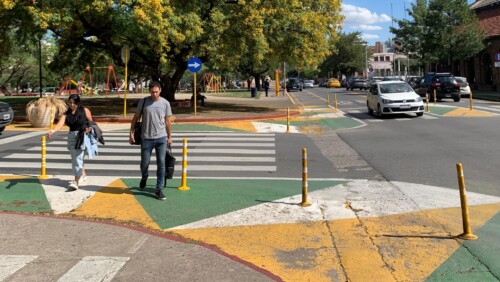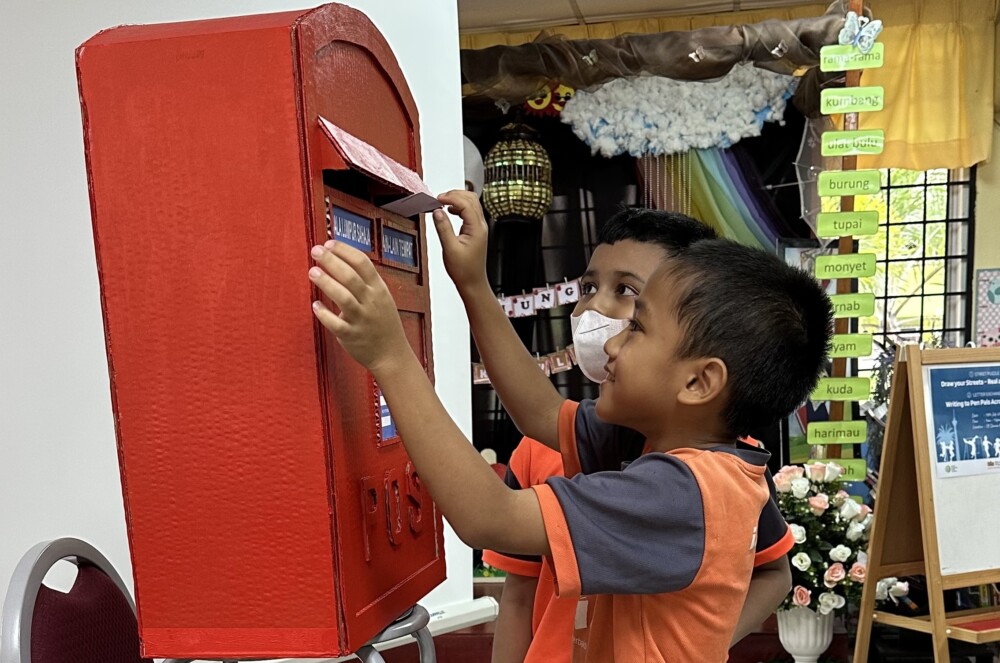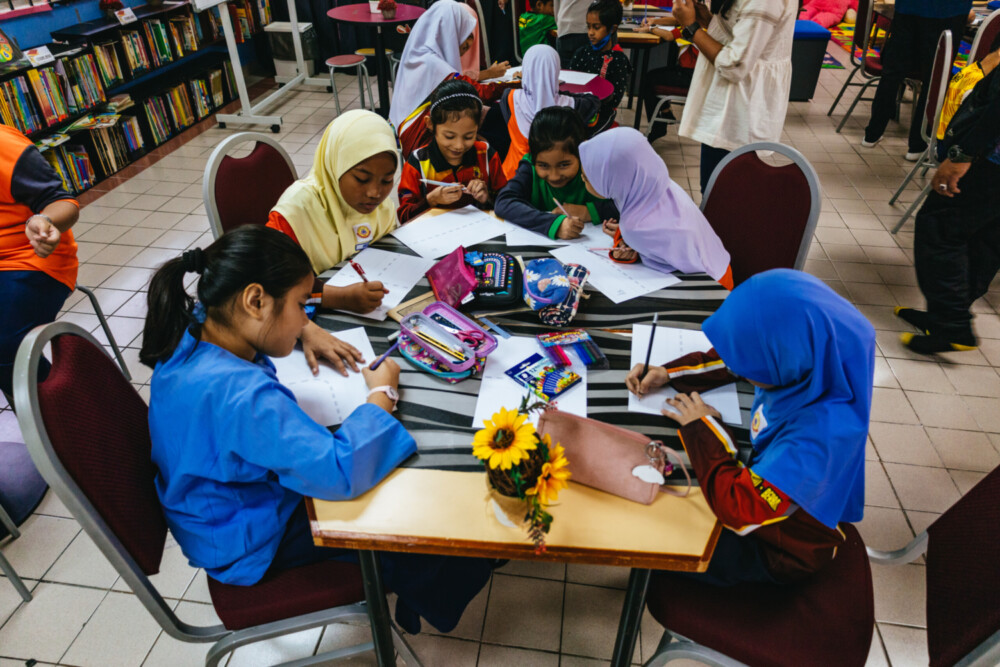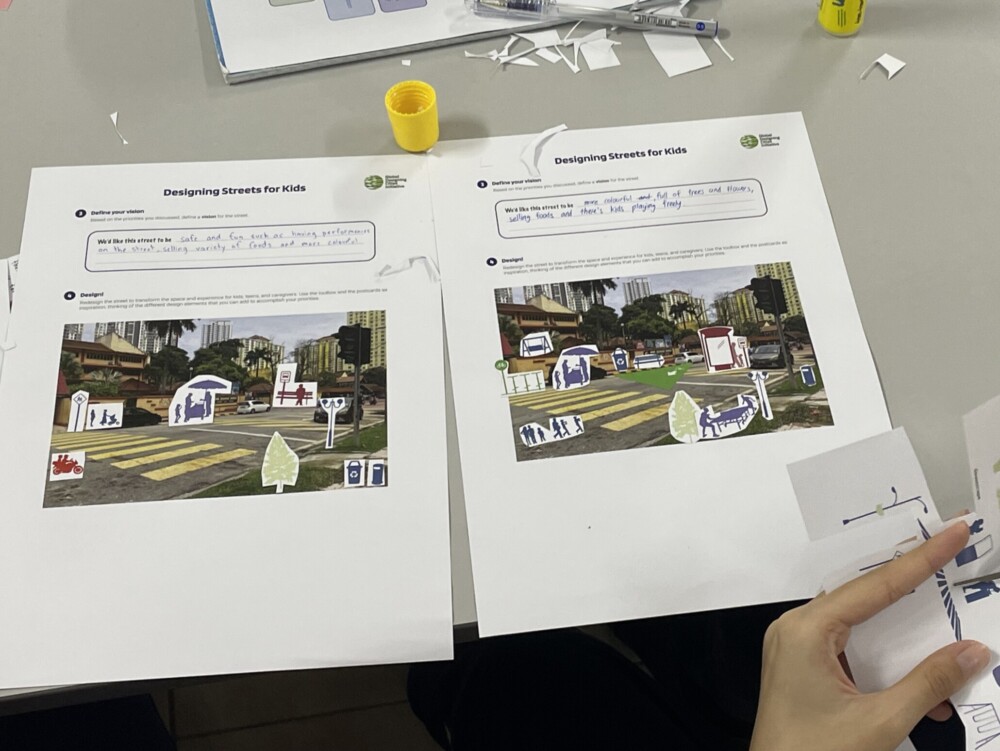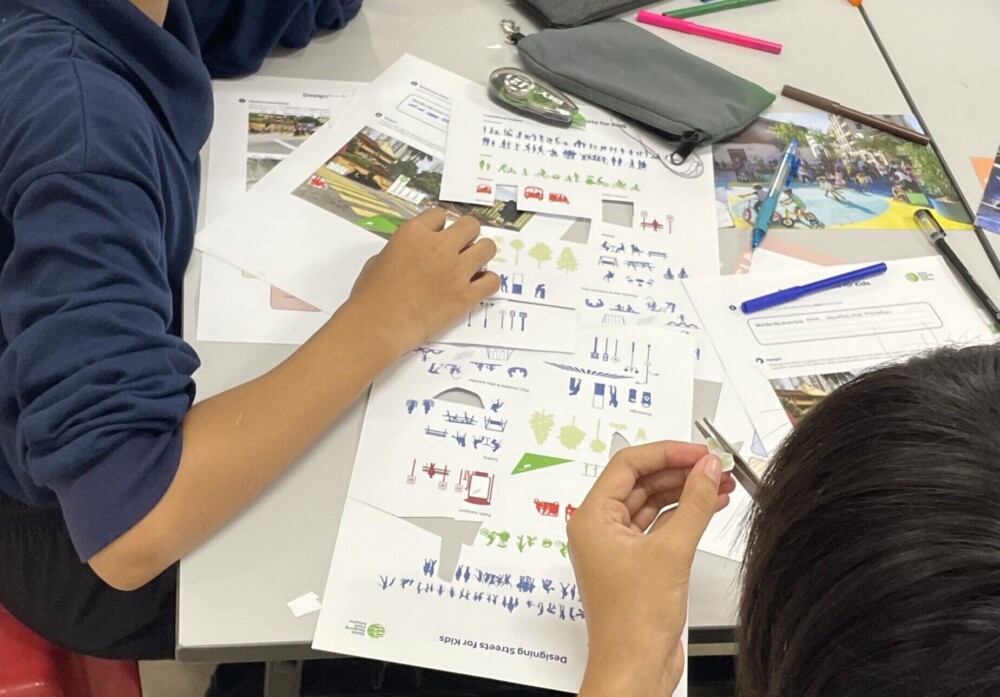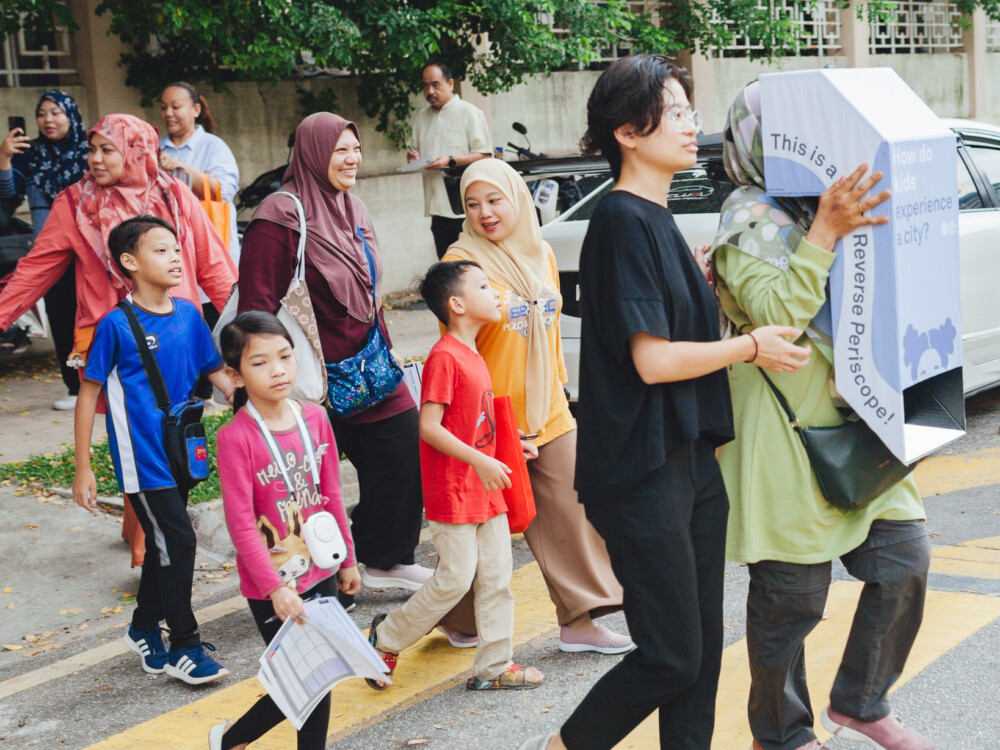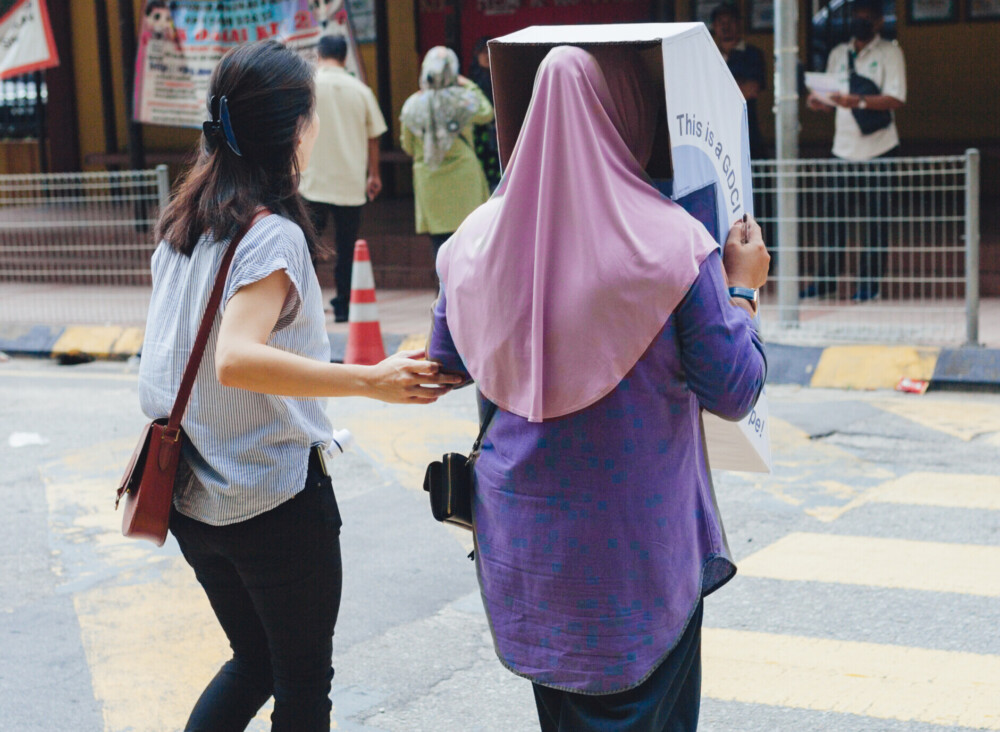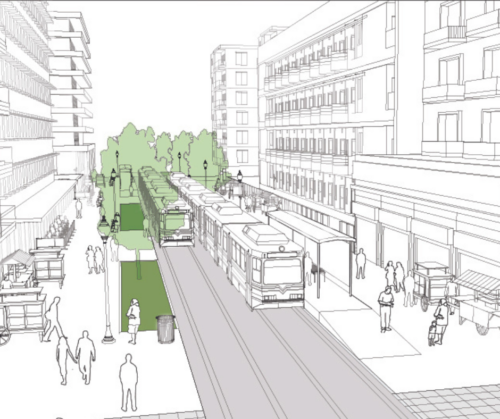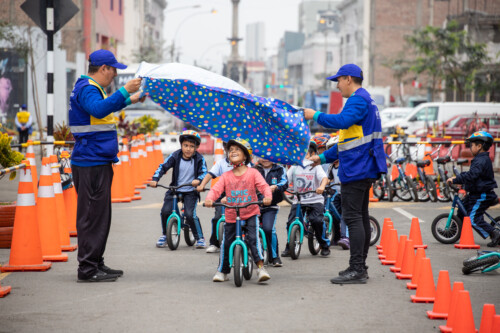Road traffic injuries impact children in Malaysia tremendously—they are responsible for 14% of deaths among children aged 5–14 years.
This makes it the leading cause of child mortality in the country. To reverse this situation, Malaysia is committed to achieving a 50% reduction in road traffic deaths and injuries by 2030, as outlined in Malaysia’s Road Safety Plan 2022-2030.
To support Malaysia’s ambitious road safety goals, the Global Designing Cities Initiative (GDCI), in collaboration with the city hall of Kuala Lumpur, or Dewan Bandaraya Kuala Lumpur (DBKL), launched the first phase of a school street transformation project for two schools in Jalan Genting Klang, Kuala Lumpur. Before embarking on the street redesign, the GDCI team engaged with students, parents, and teachers from the schools through participatory activities.
Seeing from a child’s perspective
Letter Exchange & Street Puzzle: Around 30 students from SK Danau Kota 2 primary school aged 7-12 years participated in an interactive letter exchange with their peers in Chile. This exchange allowed them to share experiences, ideas, and visions of safer streets in Kuala Lumpur. The students also engaged in a street puzzle activity where they designed their ideal streets, incorporating elements like trees, playgrounds, and safe crossings.
Reimagining the School Streets with SMK Danau Kota secondary school students: Senior students aged 13-15 years actively participated in reimagining their school streets and prioritizing their needs. Through on-site observations and graphical icons, they redesigned their streets—identifying areas that require improvement and envisioning a safer and more enjoyable environment. Lee Shen Zhou, age 13, said: “I would like to design a street for kids to play, with trees, vendors selling ice cream, and safe pedestrian walkways.”
Viewing the City from a Child’s Perspective: Parents and teachers took part in an eye-opening activity using a reverse periscope, simulating a child’s perspective at a height of 95 cm. This experience allowed them to understand the challenges faced by children on the streets, such as crossing roads and exposure to pollution. This sensitization enables GDCI to design streets that cater to the needs and safety of young children.
“With GDCI’s school engagement, it gives people ideas about what we want our street to be. I encourage my students to voice out their opinions,” said Ms. Hoo—Danau Kota secondary school principal.
Through these engaging activities, GDCI successfully gathered valuable insights from children, parents, and school staff to set a vision for safer school streets. By understanding their needs and perspectives, GDCI can implement design elements that promote children’s safe use of the streets. This collaborative approach emphasizes the importance of public engagement in unlocking the potential for safer streets, one school at a time.
